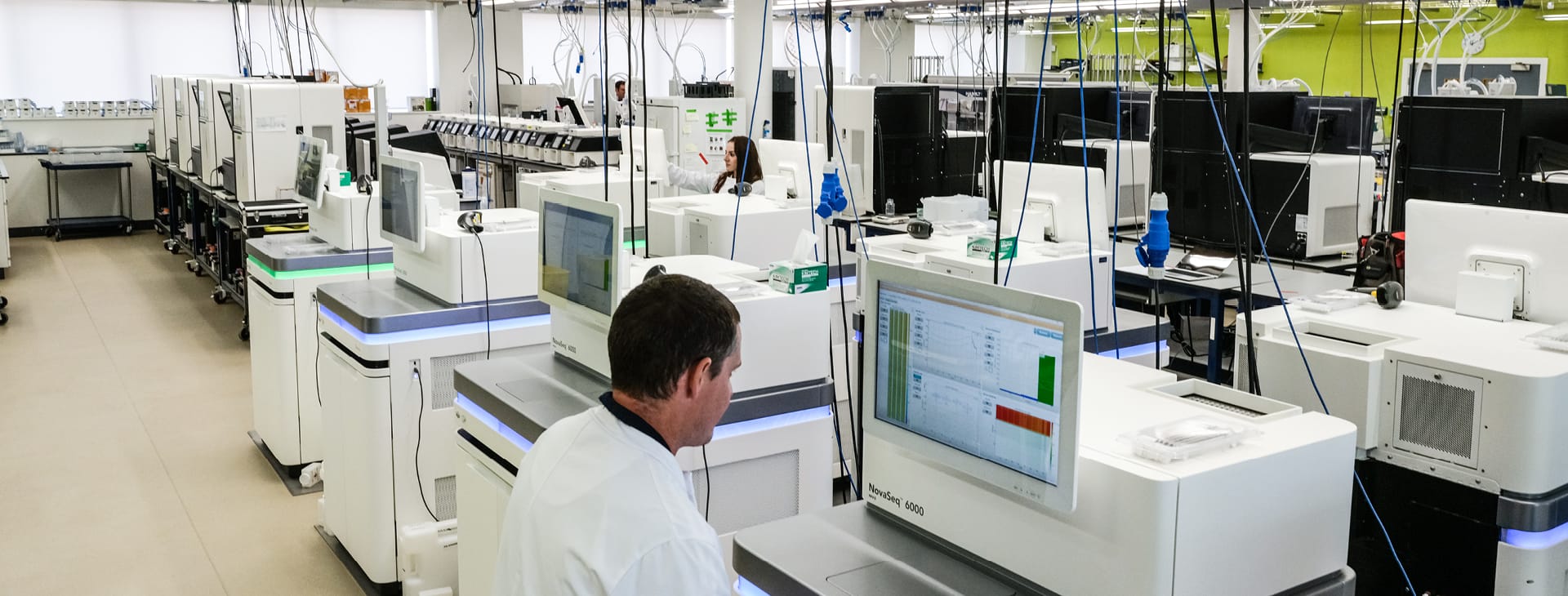Types of genome sequencing
Short-read sequencing using Illumina NovaSeq 6000s in the Bridget Ogilvie Building (BOB). Featuring Barbora Pardubska and Tristram Bellerby. Photo taken by Greg Moss of Greg Moss Photography in 2019. Image credit: Greg Moss / Wellcome Sanger Institute

We often refer to genome sequencing as part of the Human Genome Project, which read the entire human genome – but it can be used for whole genomes, right down to very specific areas of DNA.
- Genome sequencing can mean sequencing an organism's entire genome or just focusing on sequencing very specific areas of DNA.
- There are several different types of genome sequencing.
What types of genome sequencing are there?
Genome sequencing can be used to focus on the whole genome right down to specific sections of a specific gene.
Whole genome sequencing
- Whole genome sequencing focuses on sequencing all of the DNA in an organism’s genome.
- For example, the Human Genome Project sequenced the whole human genome.
De novo sequencing
- ‘De novo’ means ‘starting from the beginning’. This is when the whole genome of an organism is sequenced and assembled for the first time, without the availability of a reference genome.
- Usually, a combination of short and long pieces of DNA are sequenced to cover as much of the genome as possible and minimise the risk of there being any gaps in the final sequence.
- Imagine the genome is a jigsaw puzzle. The smaller the pieces, the more pieces there are –and the harder the puzzle is to complete. It’s the same when assembling a genome for the first time.
Resequencing
- Resequencing projects are when an organism’s genome is sequenced and assembled using the reference genome as a template. For example, the Human Genome Project provided a reference genome for future human genome sequences.
- Resequencing is used to compare differences between genomes from the same species.
Targeted genome sequencing
- Rather than the whole genome, targeted sequencing involves focusing on specific areas of interest.
- For example, researchers might look for single base changes in the DNA sequence, called single nucleotide polymorphisms (SNPs). These are the most common type of genetic variation and can help scientists find genes associated with different conditions.
Exome pulldown
- Exome sequencing is a type of targeted sequencing where researchers sequence only the genes – the sections of genome that code for a product, like a protein. This is the ‘exome’ and makes up less than 2% of the entire genome.
- Focusing on the genes can enable scientists to focus on the parts of DNA that are more likely to be linked to diseases. However, we’re learning more and more that the non-coding regions of DNA (previously known as ‘junk DNA’) is also very important in health and disease.